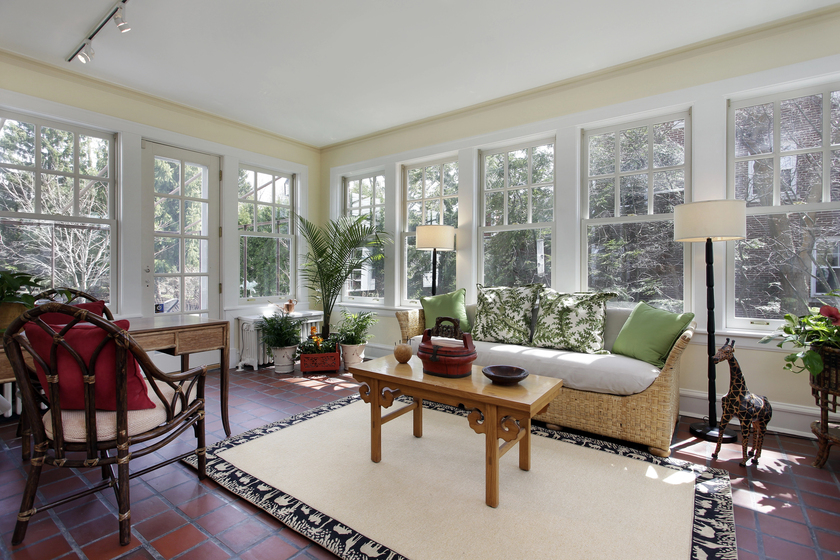When choosing the right windows for your Ohio home, it’s important to understand how each style works. Casement windows vs. double hung windows offer unique advantages each, depending on what you’re looking for in design, efficiency, and ease of use. While both styles provide the light and ventilation your home needs, one may fit your lifestyle and aesthetic preferences better than the other. Let’s break down key factors to help you make the best choice for your home, ensuring comfort, function, and beauty.

Differences in Window Design and Aesthetic Appeal
Casement windows are hinged on the side and open outward with the turn of a crank, creating an elegant, modern look. They offer an uninterrupted view since they don’t have a central sash, providing a sleek and clean appearance. Double-hung windows, on the other hand, have two operable sashes that slide vertically, making them more traditional in design. Their symmetrical look can complement historic homes or those with classic styling, adding charm without overpowering the overall aesthetic.
Energy Efficiency of Casement vs Double Hung Windows
Casement windows typically provide a tighter seal when closed, which improves energy efficiency. Since they latch tightly against the frame, they prevent air from leaking out or into the home, especially during colder months. Double-hung windows, while convenient, may allow more drafts due to their sliding mechanism. Although modern double-hung windows are built to minimize this, casement windows tend to offer better insulation, helping to maintain your home’s indoor temperature with less energy loss.
Ease of Operation for Casement and Double Hung Styles
Casement windows operate with a simple crank mechanism, allowing you to easily control how wide they open. This feature can be particularly helpful in areas that are harder to reach, such as over kitchen sinks or countertops. You only need to turn the crank handle, and the window smoothly swings open. Double-hung windows, with their sliding sashes, offer versatility in operation, letting you open either the top or bottom sash for ventilation. They do not require extra space to open outward, making them ideal for homes with patios or walkways directly outside.
Casement windows may be slightly more challenging to open if you have mobility issues, as they require reaching the crank and turning it. Double-hung windows, on the other hand, are easy to open with a simple upward or downward motion. However, casement windows can provide better ventilation, catching side breezes more effectively, while double-hung windows can sometimes limit airflow depending on how they are positioned. Both types offer good functionality but work differently based on location and need.
Window Cleaning and Maintenance Requirements Comparison
Casement windows can be easier to clean, especially from the inside, because they fully open outward, allowing you to reach both sides of the glass from inside your home. This makes them ideal for second-story windows or hard-to-reach areas. Double-hung windows, while also easy to clean, often have tilt-in sashes that allow you to clean both sides of the window from inside, making them equally convenient for upper floors. Both styles offer low-maintenance options with modern materials like vinyl and fiberglass.
Cost Differences Between Casement and Double Hung Windows
Casement windows tend to cost slightly more than double-hung windows due to their hardware and mechanism. The crank system and more complex sealing design can add to the overall price. However, this investment may pay off in terms of better energy efficiency and reduced heating or cooling costs over time. Double-hung windows, while generally more affordable upfront, may require more maintenance or repairs over the years, especially in older models where the sliding tracks can wear down.
Durability and Longevity of Each Window Type
Casement windows are known for their durability, especially when constructed with strong materials like fiberglass or vinyl. The simple crank mechanism is less likely to experience issues over time compared to the sliding sashes of double-hung windows. This durability makes them a long-term investment for homeowners looking for minimal upkeep. Double-hung windows, while also durable, may require more maintenance in the long run due to the moving sashes and balance systems that help them operate smoothly.
While both window types can last for many years with proper care, casement windows might have a slight edge in terms of longevity because their operation puts less strain on the hardware. Double-hung windows often need regular adjustments to ensure the sashes continue to glide smoothly. Over time, replacing or repairing these moving parts could become necessary, but with advancements in materials, even double-hung windows offer good durability in today’s market.
Suitability for Different Rooms in the Home
Casement windows are ideal for areas where you want to maximize ventilation, such as kitchens and living rooms. Their wide opening allows for better airflow, especially in spaces where a cross breeze is desirable. Double-hung windows are more suited for rooms where space is tight or furniture is placed near the window, such as bedrooms or hallways. Their vertical operation means they don’t protrude outward, which can be a practical advantage in high-traffic areas around the exterior of the home.
Weather Resistance of Casement vs Double Hung Windows
Casement windows excel in weather resistance due to their tight seals, which prevent drafts and moisture from entering the home. This feature makes them particularly effective in regions with extreme temperatures or high winds. Double-hung windows, while improved in terms of sealing technology, may still allow some air leakage, especially if not properly maintained. Casement windows are better at withstanding severe weather conditions, keeping your home comfortable and protected.
Installation Complexity of Casement vs Double Hung Windows
Casement windows often require more complex installation due to their hardware and the precise alignment needed for the crank mechanism. This can lead to slightly higher labor costs compared to the simpler installation process of double-hung windows. Double-hung windows are easier to install, especially for retrofits or replacements, since they don’t require as much precise fitting or hardware setup. For new constructions or complete remodels, the installation difficulty of casement windows might be worth considering, especially if budget or time is a concern.
Upgrade Your Ohio Home with Casement or Double Hung Windows by WeatherSealWeatherSeal Home Services offers expert window installation to help you get the best value from your windows. Whether you prefer the sleek look of casement windows or the classic appeal of double-hung, we provide high-quality products to match your style. If you’re looking for window replacement, our team ensures the process is smooth and efficient, giving your home a fresh new look. With a range of commercial windows made in USA, we guarantee superior durability and performance.








